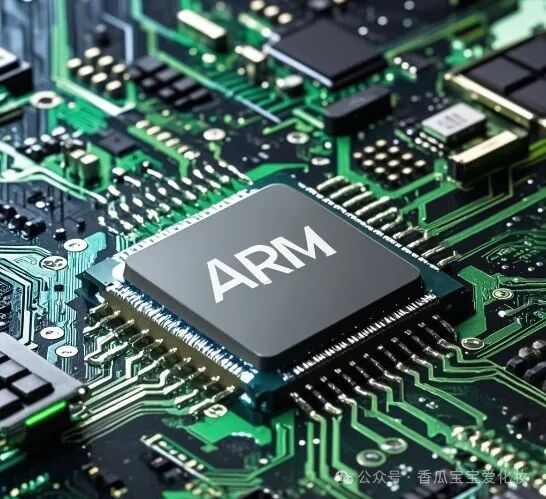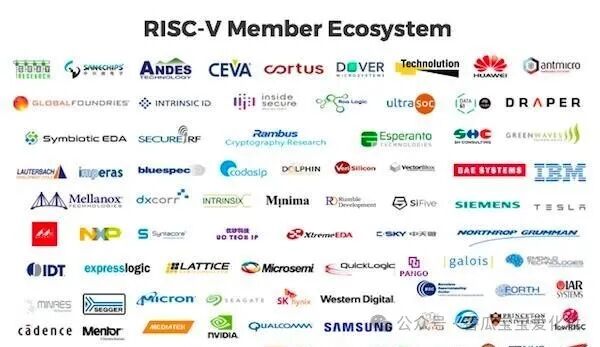This may be the most explosive script in the chip industry in twenty years—ARM is wielding legal weapons to pursue its partners worldwide, resembling a real-life version of “Game of Thrones.” Just last month, Qualcomm launched antitrust complaints against ARM across three continents, pushing this battle for architectural hegemony to a boiling point. Meanwhile, Chinese chip manufacturers are holding expired technology licenses, watching the ghost vulnerabilities in their products with frustration.
The issue stems from ARM’s “sellout contract” business model. Although this British company reported only $2.7 billion in revenue in 2021 (source: ARM 2021 Annual Report), which pales in comparison to Qualcomm’s $12.9 billion in the same year (Qualcomm 2021 Financial Report), it holds the key to 95% of the world’s smartphones. Which domestic smartphone brand dares to claim it can bypass the ARM architecture? The problem lies in the “one generation, one purchase” tyrannical clause, akin to a collective “technology sellout contract” signed by smartphone manufacturers. A netizen complained on a tech forum: “This is not a technology license; it’s clearly a periodic protection fee!”

Qualcomm’s table flip was directly triggered by last year’s patent war. At that time, ARM aimed to revoke Qualcomm’s architectural license on the grounds of “technical overreach,” infuriating Qualcomm’s legal department, which scoured ten-year-old contracts for loopholes overnight. This incident caused a stir in the semiconductor circle, as industry insiders understood that ARM was trying to stifle any potential threats to its monopoly. Just like the x86 architecture dominated the PC era, ARM clearly wants to replicate Intel’s old path—building a moat with technical standards and turning partners into puppets.
However, such a greedy approach will eventually choke them. Domestic manufacturers are now struggling with the ARM v8 architecture manual, not because they don’t want to innovate, but because ARM simply doesn’t give them the opportunity. The “Spectre vulnerability” exposed in 2020 still haunts them, and Chinese manufacturers without architectural modification rights can only watch helplessly. An anonymous engineer revealed on Zhihu: “We feel like we’re repairing a watch with shackles on; we know where the vulnerabilities are, but we’re not even allowed to change the screwdriver.” Even worse is the supporting ecosystem; currently, the number of motherboard suppliers supporting ARM chips is less than one-third of that for the x86 architecture (IDC 2022 data), forcing manufacturers to reinvent the wheel, causing costs to skyrocket.

The policy dividends are also becoming unstable. Although they can still rely on the “domestic substitution” trend for shipments, it is evident that ARM is tightening its purse strings. From Cortex A9 to A77, domestic manufacturers have pursued nine generations of architectural licenses, only to find the latest A78 supply cut off. This scene recalls the DVD patent war twenty years ago, where each domestic DVD had to pay $21.3 in patent fees to the 6C alliance (China Electronic Video Industry Association 2004 data), effectively becoming “labor emperors.”
However, history often rhymes. The x86 architecture was once so powerful, yet now it has lost half of its territory to ARM. ARM’s current monopoly tricks may one day backfire due to its own greed. As a netizen @芯片老炮儿 said on Weibo: “Just as Nokia fell, ARM will too— the more thoroughly it monopolizes, the harder it will fall.” Currently, the rise of the RISC-V architecture is already showing signs; in 2022, global RISC-V chip shipments surpassed 1 billion (RISC-V International Foundation data), and this dark horse may one day topple ARM from its throne.

The most ironic point in this battle for architectural hegemony is that the more ARM chokes others, the more it digs its own grave. Look at Intel next door; once dominant through the Wintel alliance, it nearly got toppled in the mobile internet era. ARM’s current aggressive stance towards its partners is strikingly similar to Intel’s behavior twenty years ago. Industry insiders reveal that a certain domestic smartphone giant has quietly begun to lay out RISC-V, preparing to start anew in the IoT field.
But can we say that domestic manufacturers are innocent? The strategy of exchanging technology for market access over the past twenty years has ultimately been a poison pill. As netizen @硬核科代表 said: “We can’t expect others to always donate core technology, can we?” The old academicians at the Institute of Computing Technology, Chinese Academy of Sciences, have long demonstrated this—although the LoongArch ecosystem is developing as slowly as a snail, at least they don’t have to look at others’ faces. The news of the successful tape-out of the Loongson 3A6000 in 2023 (Loongson Zhongke announcement) has at least given the industry a glimmer of hope for breaking the deadlock.

As this drama reaches its climax, the most concerning aspect remains the engineers caught in the middle. They must deal with ARM’s increasingly stringent technical restrictions while also guarding against the Damocles sword of potential supply cuts. A certain chip design company complained on Maimai: “We now have to prepare three plans, A, B, and C; if ARM suddenly cuts off supply, we will immediately switch to the RISC-V plan.” This precarious state has forced Chinese semiconductor professionals to develop unique survival wisdom.
As ARM wields legal documents to harvest worldwide, it may have forgotten that thirty years ago, it also rose by breaking the x86 monopoly. Is history’s master of cycles preparing a new script for all players? For those Chinese manufacturers trapped in the ARM ecosystem, will they continue to kneel for profits, or will they grit their teeth and develop their own architecture? The answer to this question may lie in some EDA laboratory that remains lit late into the night.